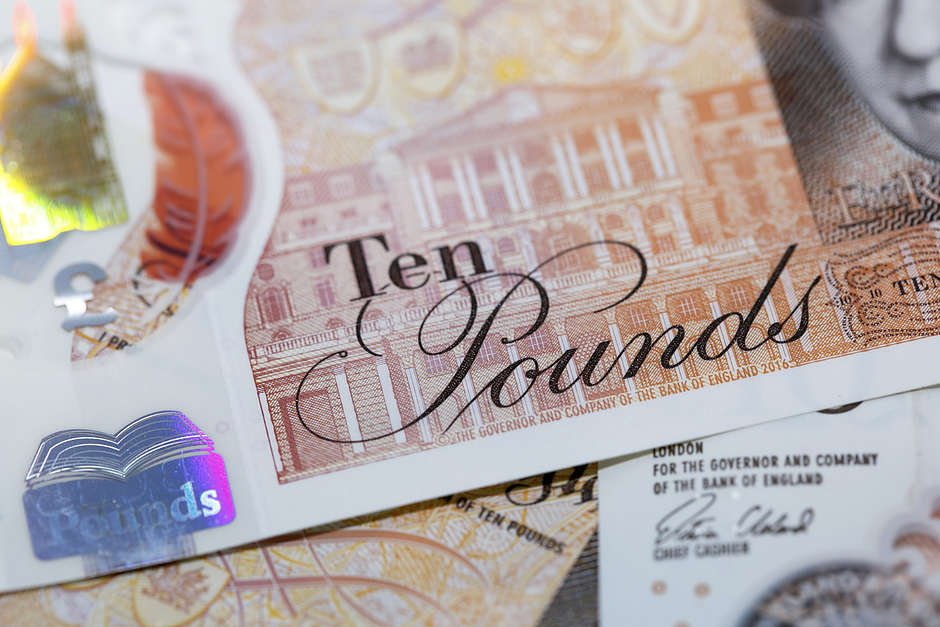GBP/USD Forecast: Pound Sterling could face stiff resistance at 1.2760
- GBP/USD fluctuates above 1.2700 in the European session on Tuesday.
- 1.2760 aligns as next key resistance for the pair.
- Investors could refrain from taking large positions ahead of UK inflation data.

GBP/USD holds steady slightly above 1.2700 early Tuesday after closing the first day of the week virtually unchanged. The technical outlook shows that the bullish bias stays intact but the pair's action could remain subdued ahead of key inflation data from the UK on Wednesday.
The lack of high-impact macroeconomic data releases allowed financial markets to remain quiet on Monday. Comments from Federal Reserve (Fed) officials helped the US Dollar find a foothold following the decline seen in the previous week and made it difficult for GBP/USD to stretch higher.
British Pound PRICE Last 7 days
The table below shows the percentage change of British Pound (GBP) against listed major currencies last 7 days. British Pound was the strongest against the Swiss Franc.
| USD | EUR | GBP | JPY | CAD | AUD | NZD | CHF | |
|---|---|---|---|---|---|---|---|---|
| USD | -0.77% | -1.29% | -0.06% | -0.28% | -0.94% | -1.40% | 0.08% | |
| EUR | 0.77% | -0.54% | 0.71% | 0.50% | -0.16% | -0.64% | 0.85% | |
| GBP | 1.29% | 0.54% | 1.23% | 1.01% | 0.35% | -0.12% | 1.38% | |
| JPY | 0.06% | -0.71% | -1.23% | -0.21% | -0.89% | -1.36% | 0.15% | |
| CAD | 0.28% | -0.50% | -1.01% | 0.21% | -0.67% | -1.12% | 0.35% | |
| AUD | 0.94% | 0.16% | -0.35% | 0.89% | 0.67% | -0.47% | 1.03% | |
| NZD | 1.40% | 0.64% | 0.12% | 1.36% | 1.12% | 0.47% | 1.50% | |
| CHF | -0.08% | -0.85% | -1.38% | -0.15% | -0.35% | -1.03% | -1.50% |
The heat map shows percentage changes of major currencies against each other. The base currency is picked from the left column, while the quote currency is picked from the top row. For example, if you pick the British Pound from the left column and move along the horizontal line to the US Dollar, the percentage change displayed in the box will represent GBP (base)/USD (quote).
Later in the day, Bank of England (BoE) Governor Andrew Bailey will speak on the key role that central bank reserves play in delivering the core mandates at an event organized by the London School of Economics and Political Science.
During the American trading hours, Fed Governor Christopher Waller, NY Fed President John Williams and Boston Fed President Susan Collins and Cleveland Fed President Loretta Mester are scheduled to deliver speeches. Fed officials have been acknowledging the progress seen in inflation in April, while taking on a cautious tone with regards to policy easing. Hence, the impact of Fed commentary on the USD's valuation until Thursday's PMI data could remain short-lived.
On Wednesday, the UK's Office for National Statistics (ONS) will publish Consumer Price Index (CPI) data for April. Investors expect the annual CPI inflation to decline to 2.1% from 3.2% in March. A reading below the market expectation could revive expectations for a BoE rate cut in June and weigh on Pound Sterling.
GBP/USD Technical Analysis
GBP/USD trades within the upper half of the ascending regression channel coming from late April and the Relative Strength Index (RSI) indicator on the 4-hour chart stays near 70, suggesting that the pair could have a hard time gathering further bullish momentum before making a technical correction.
On the upside, 1.2760 (Fibonacci 78.6% retracement of the latest downtrend, upper limit of the ascending channel) aligns as key resistance before 1.2800 (psychological level, static level). Supports are located at 1.2700 (psychological level, static level), 1.2660 (Fibonacci 61.8% retracement of the latest downtrend, mid-point of the ascending channel) and 1.2600 (static level).
Pound Sterling FAQs
The Pound Sterling (GBP) is the oldest currency in the world (886 AD) and the official currency of the United Kingdom. It is the fourth most traded unit for foreign exchange (FX) in the world, accounting for 12% of all transactions, averaging $630 billion a day, according to 2022 data. Its key trading pairs are GBP/USD, aka ‘Cable’, which accounts for 11% of FX, GBP/JPY, or the ‘Dragon’ as it is known by traders (3%), and EUR/GBP (2%). The Pound Sterling is issued by the Bank of England (BoE).
The single most important factor influencing the value of the Pound Sterling is monetary policy decided by the Bank of England. The BoE bases its decisions on whether it has achieved its primary goal of “price stability” – a steady inflation rate of around 2%. Its primary tool for achieving this is the adjustment of interest rates. When inflation is too high, the BoE will try to rein it in by raising interest rates, making it more expensive for people and businesses to access credit. This is generally positive for GBP, as higher interest rates make the UK a more attractive place for global investors to park their money. When inflation falls too low it is a sign economic growth is slowing. In this scenario, the BoE will consider lowering interest rates to cheapen credit so businesses will borrow more to invest in growth-generating projects.
Data releases gauge the health of the economy and can impact the value of the Pound Sterling. Indicators such as GDP, Manufacturing and Services PMIs, and employment can all influence the direction of the GBP. A strong economy is good for Sterling. Not only does it attract more foreign investment but it may encourage the BoE to put up interest rates, which will directly strengthen GBP. Otherwise, if economic data is weak, the Pound Sterling is likely to fall.
Another significant data release for the Pound Sterling is the Trade Balance. This indicator measures the difference between what a country earns from its exports and what it spends on imports over a given period. If a country produces highly sought-after exports, its currency will benefit purely from the extra demand created from foreign buyers seeking to purchase these goods. Therefore, a positive net Trade Balance strengthens a currency and vice versa for a negative balance.
Premium
You have reached your limit of 3 free articles for this month.
Start your subscription and get access to all our original articles.
Author

Eren Sengezer
FXStreet
As an economist at heart, Eren Sengezer specializes in the assessment of the short-term and long-term impacts of macroeconomic data, central bank policies and political developments on financial assets.


















